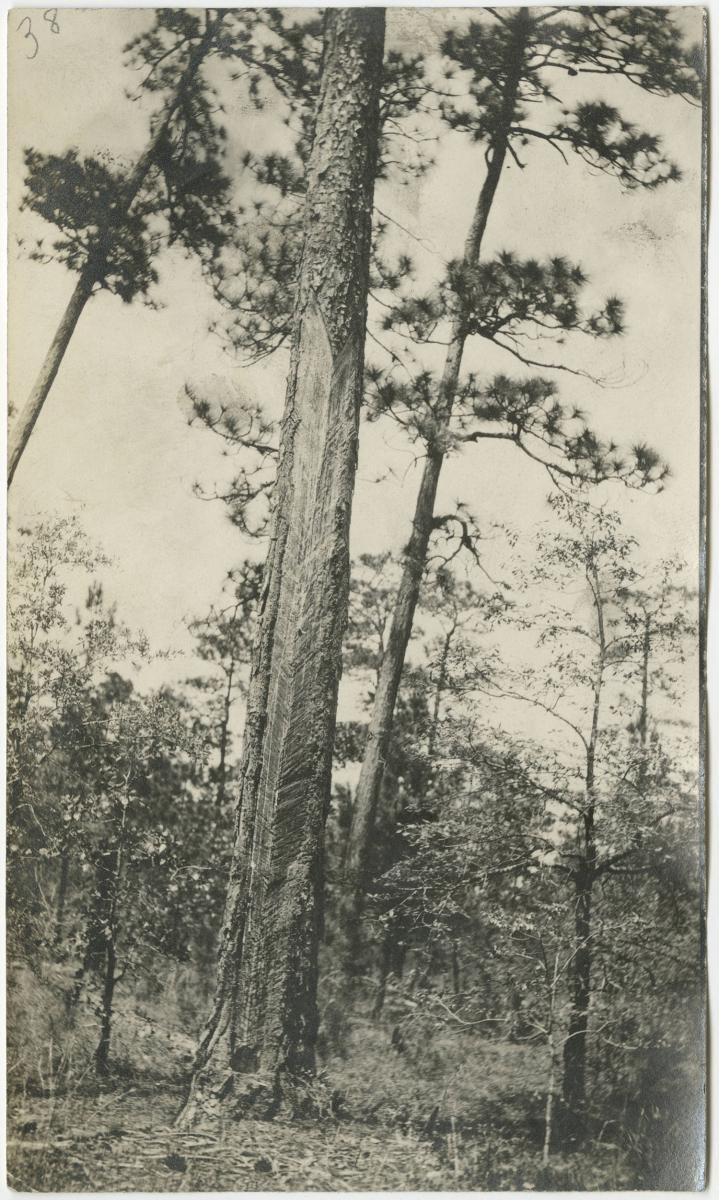Turpentine Tree
This image shows a longleaf pine tree that has been harvested for turpentine for many years. Visible at the bottom of the tree is the turpentine "box" which was carved into the bottom to catch the sap as it seeped from the tree. Along the trunk are many marks where the tree has been chipping or scarified so that it would produce sap, which could then be distilled into turpentine. On this tree, the marks go quite high, which means a ladder must have been used to harvest the sap. After trees were no longer suitable for turpentine production, they could be burned to produce tar.

Folder 0173: Turpentine: Tree Tapping: Scan 1, in the Miscellaneous Subjects Image Collection (P0003), North Carolina Collection Photographic Archives, The Wilson Library, University of North Carolina at Chapel Hill.
Rights Status Unknown
The exact copyright and related rights status of this item is unknown or undetermined. You can use this item in a way that is permitted by the copyright legislation that applies to your use.